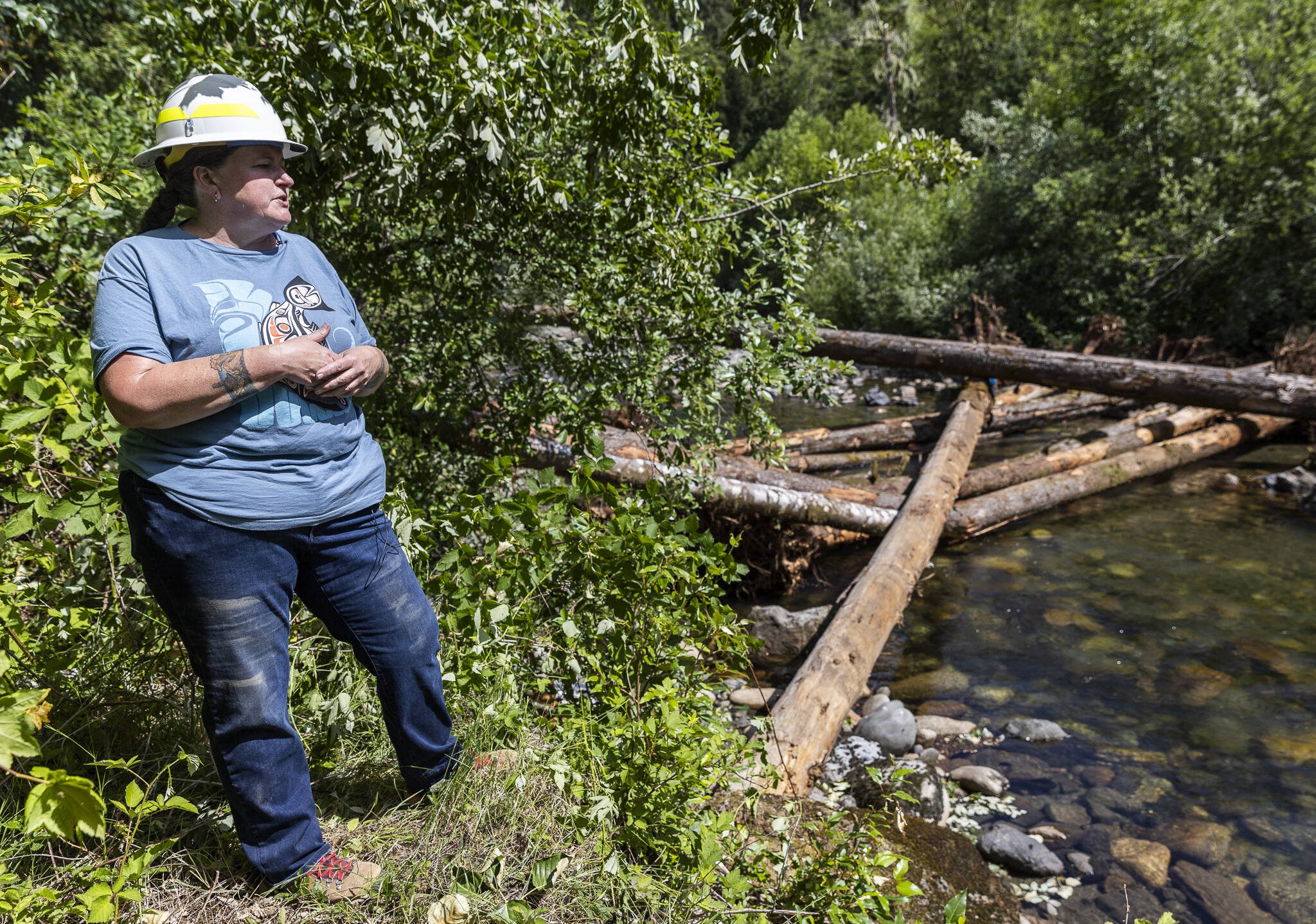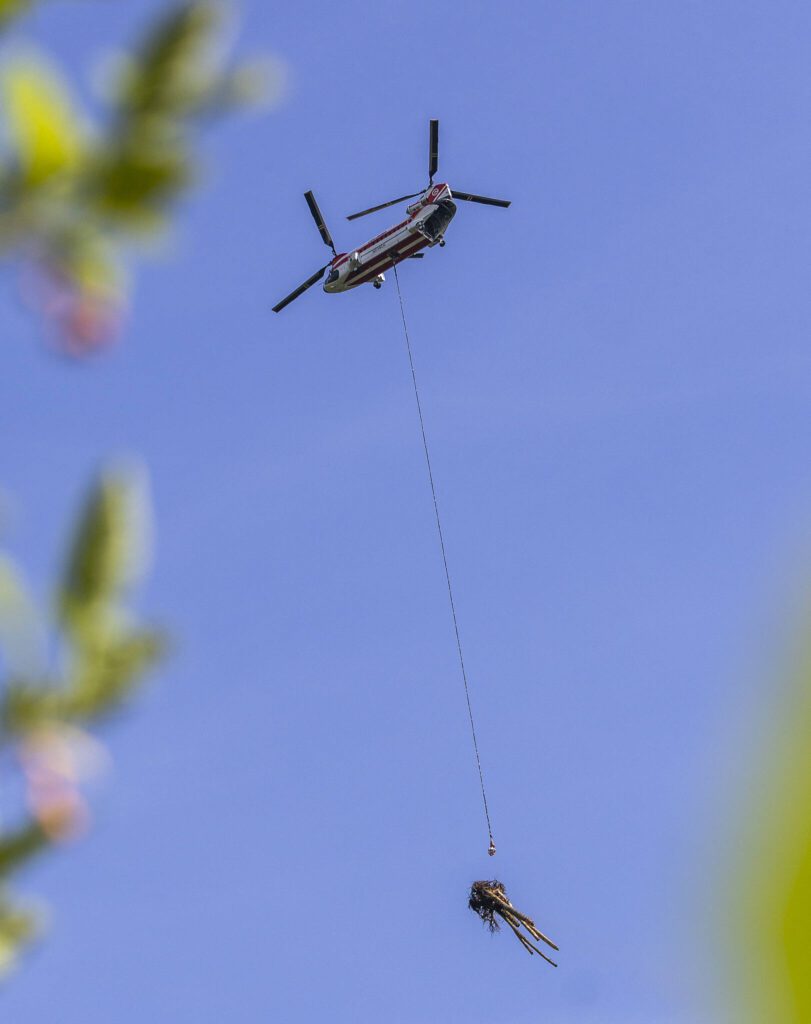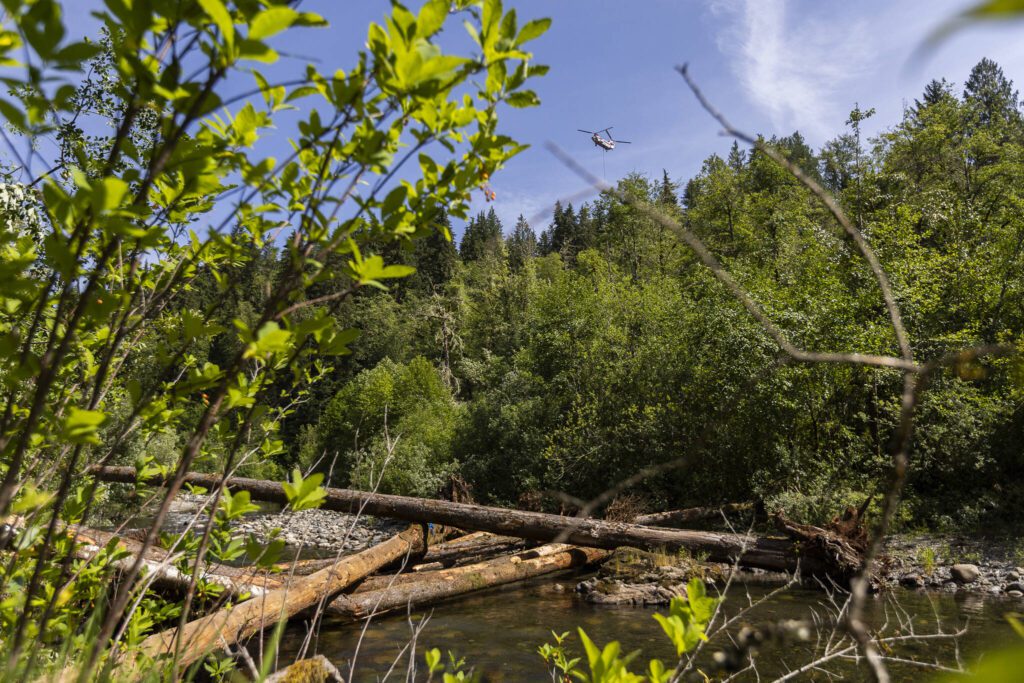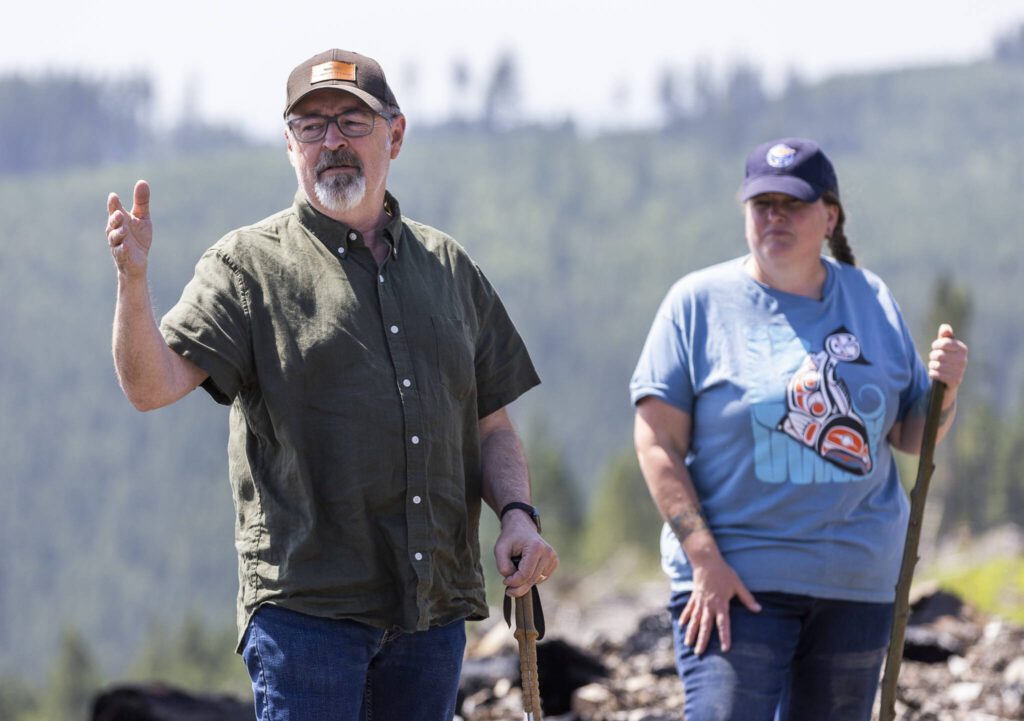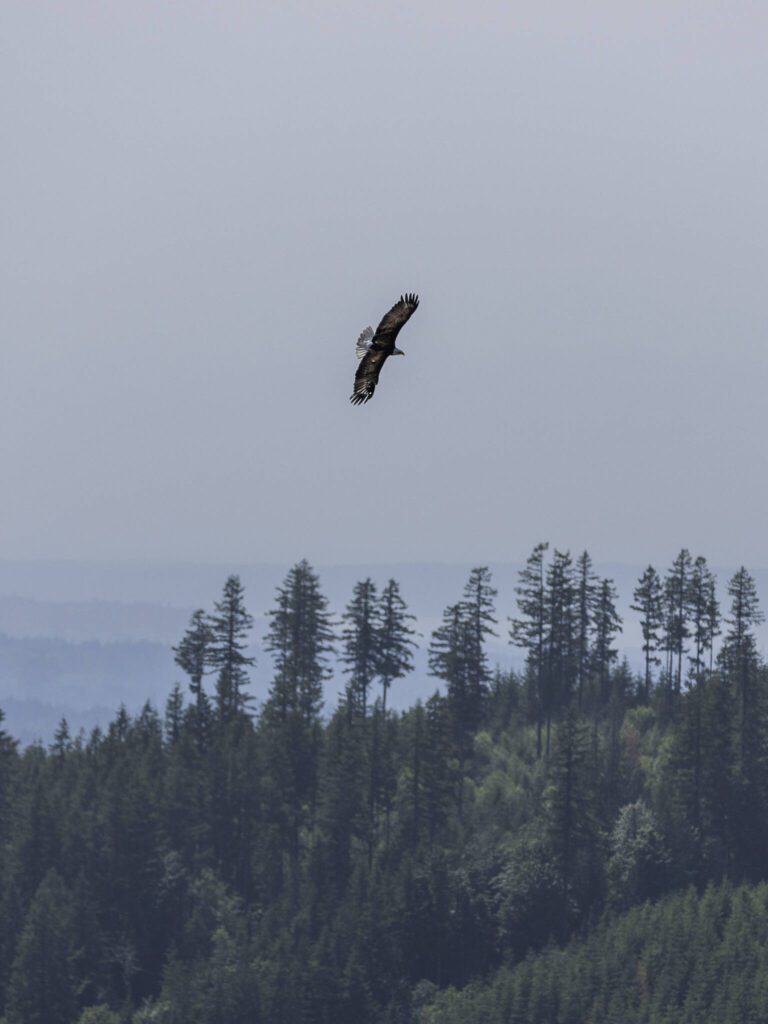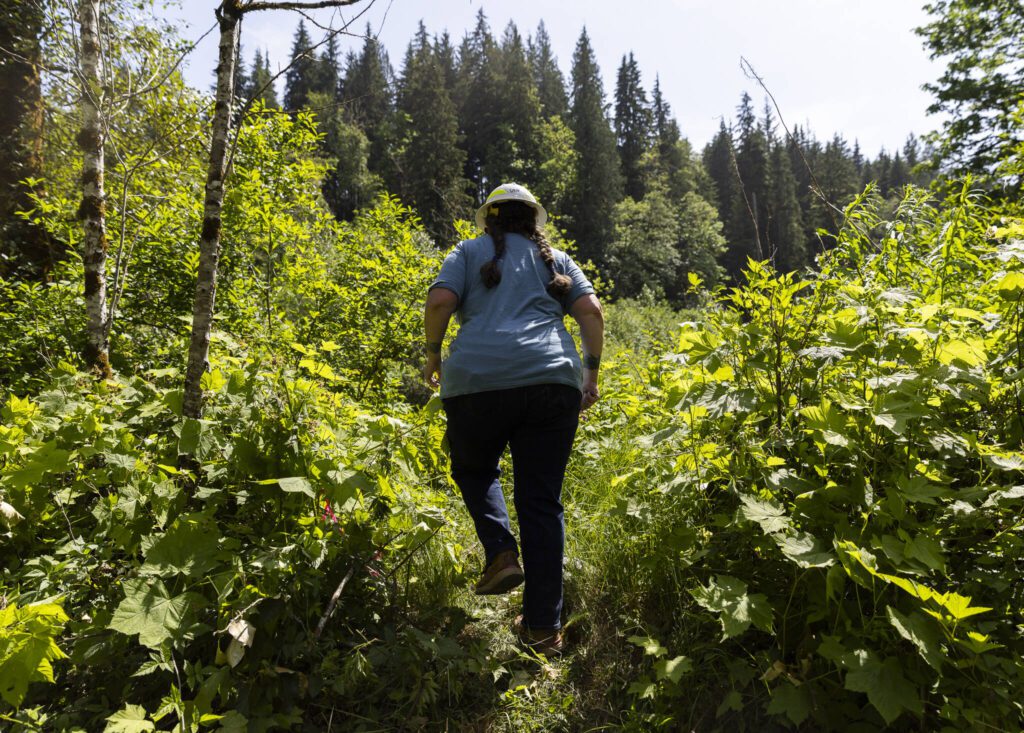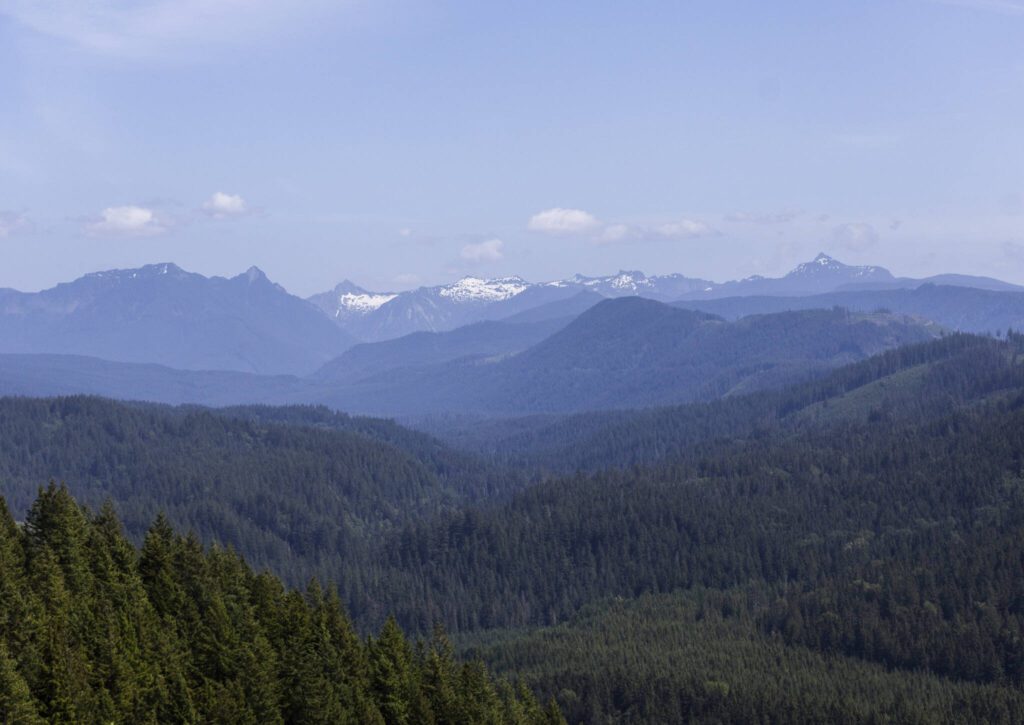GRANITE FALLS — The faint whoosh of helicopter blades cut through the sound of running water as Rachel Benbrook pointed out an engineered log jam on the Pilchuck River.
Benbrook leads the state’s Department of Natural Resources watershed resilience program, which has teamed up with the Tulalip Tribes to restore an 8-mile stretch of the Upper Pilchuck River. In three days, Chinook helicopters will fly 320 logs to 30 designated spots to create log jams with the hopes of creating critical habitat for juvenile Chinook salmon.
“We’ve learned after a couple hundred years of taking wood out of our rivers how important it is to have wood in the river,” Benbrook said on Wednesday. “Salmon need all different types of habitats to thrive — large wood creates that complexity.”
She continued to explain large woody debris helps create pools where juvenile fish can rest and hide, with large trunks casting shadows to keep river temperatures cool. The wood also slows down the water, allowing sediment to pile up in areas that salmon can use as spawning grounds.
“I’ve done a lot of monitoring in my life, and I’ve never seen a stream channel or river that had the amount of wood that it needs,” said Kurt Nelson, Tulalip Tribes’ environmental department manager, who joined Benbrook on Wednesday for a tour of one of the log jams.
The project is part of the state’s Large Wood Supply Initiative, a new effort the agency is piloting within the Snohomish River Basin to source trees from DNR-managed lands to support partners’ salmon recovery projects.
For the Upper Pilchuck, that partner is the Tulalip Tribes, which paid for the operational costs of the project with the support of a $600,000 grant from the National Oceanic and Atmospheric Administration. Tulalip staff also scoped where the project would have the most benefit and paid for the permitting and helicopter contractor.
Ryan Miller, a Tulalip board of directors council member said he especially loves doing work on the Pilchuck, where his family came from a village just a couple miles up from the confluence of the Pilchuck and Snohomish.
“For the whole of Puget Sound, the Snohomish Basin is the largest producer of coho salmon in the entire Puget Sound,” he said. “It’s great to see projects like this because we know that we’re making that incremental change, but we need to continue to build on it.”
The entire project takes place on DNR land, making it significantly easier to coordinate, Benbrook said, instead of having to work with private land owners or different municipalities which sometimes create logistical obstacles for large-scale restoration work.
The state purchased the logs — a majority coming from DNR-managed land and an additional 30 from the City of Everett — and contracted the staging of logs for helicopters to pick up. Including staff time, the state put roughly $275,000 into the project, Will Rubins, a communications manager for DNR wrote in a text.
“We’re learning so much from working with Tulalip on this project, and I know my gears are already turning, wondering where the next spot is, where we can find places on DNR lands to do more projects like this,” Benbrook said.
A previous version of the article stated the incorrect amount the Department of Natural Resources contributed to the project. DNR contributed $275,000.
Eliza Aronson: 425-339-3434; eliza.aronson@heraldnet.com; X: @ElizaAronson.
Eliza’s stories are supported by the Herald’s Environmental and Climate Reporting Fund.
Talk to us
> Give us your news tips.
> Send us a letter to the editor.
> More Herald contact information.
